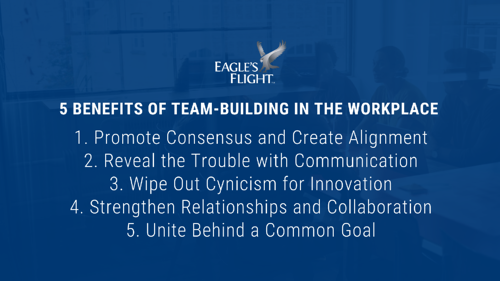A collaborative workforce in which individuals work together to achieve a common goal is more likely to function as a productive, high-performing team. In a survey of C-suite executives, 73 percent said that their company would be even more successful if employees worked more collaboratively. Furthermore, 56 percent of respondents said the number one factor that would have the greatest impact on overall profitability was collaboration between employees. In a collaborative workplace, individuals don’t just exercise strong teamwork skills some of the time; they operate in a culture where collaboration is consistent and evident in their everyday behaviors. Here are the seven characteristics of a workforce that is truly collaborative.
Strong Leadership
Leaders set the tone for employee behavior, helping to encourage and guide collaboration within and between teams. They also communicate expectations for teamwork and coach individuals to be better at working together. Research conducted by the Institute for Corporate Productivity found that the top behaviors of collaborative leaders include:
- Modeling collaborative behaviors through their own example
- Building strong internal networks and frequently working with individuals in other departments and roles
- Rewarding others who engage in collaborative behaviors
By engaging in these activities, collaborative leaders can help the organization resist the formation of silos and build a culture in which collaboration occurs naturally.
Clearly Defined Roles for Subgroups
When each team has clarity about their role in helping the company achieve its goals, collaboration is not only more possible, but is likely to be more rewarding for everyone involved. Instead of individuals quickly growing frustrated about duplicated efforts or a ball that’s been dropped, they can more easily share information and ideas when they’re clear about where team accountabilities lie and who’s responsible for what. Individuals in a collaborative workforce understand how their respective roles fit together.
Consistent, United, and Enthusiastic Effort
Although results are always important, individuals in a truly collaborative workforce also maintain a united and enthusiastic effort throughout the life of any activity. That united effort is important because if any person or team loses enthusiasm for the shared goal or begins to give less than their best effort, the whole organization can suffer. Everyone working together as a team from the beginning to the end of each task, project, or quarter ensures a consistent effort.
Effective and Frequent Communication
Collaboration can’t happen without effective communication between teams and individuals. No person or team within the organization can be an island, and frequent communication is what helps people learn, make progress on key projects, and overcome obstacles. When everyone is communicating, each person has the chance to share their ideas and talents with the broader team, and there is less risk of confusion about expectations and deliverables.
Shared Resources
Each team and individual possesses resources that can be helpful to others, and it’s not just information. Resources such as time, ideas, and experience are also routinely shared in a truly collaborative work environment. No one ever said it was easy to share resources, especially when you feel time-constrained. However, when resources are shared rather than consistently held close to the vest, the whole team ultimately benefits.
Periodic and Temporary Suppression of the Ego
Having a healthy ego and a strong sense of confidence is great. However, sometimes collaboration requires that the ego take a backseat so that others can have a voice, apply their talents, and contribute to the team. In a collaborative workforce, it’s ideal for every member of the team to share their ideas and contributions, rather than just one person or a handful of people.
Unanimous Focus on a Common Goal
When people see that they are working toward a common goal, they’re more likely to work together to achieve it. A collaborative workforce is able to look beyond personal agendas and competition between teams and recognize that each person and team has a unique role to play in meeting the common goal. When everyone is unanimously focused on the shared goal, a sense of camaraderie develops and people begin to see that they are “all in this together.”
When you build a truly collaborative workforce, you can achieve a range of benefits, such as productive employees, more cohesive teams, and a more effective organization. A good way to get started in developing the characteristics of a collaborative workforce is through employee learning and development that helps to build leadership, communication, and teamwork skills throughout the entire workforce.












